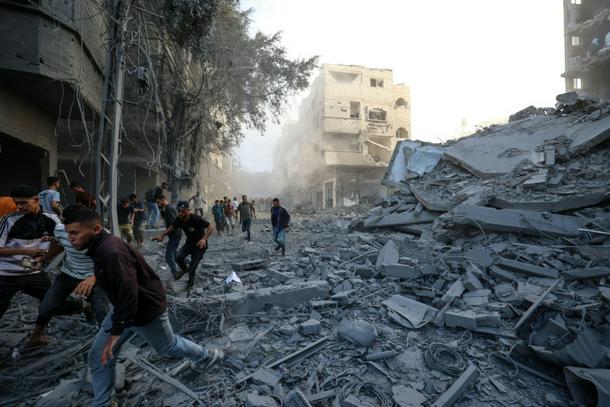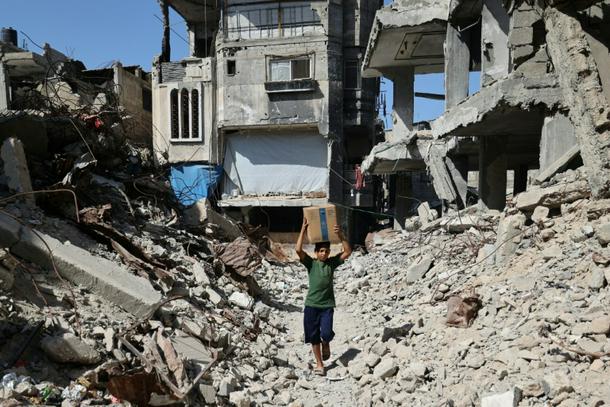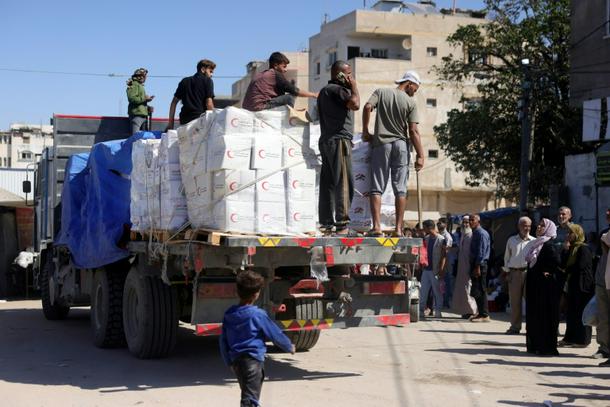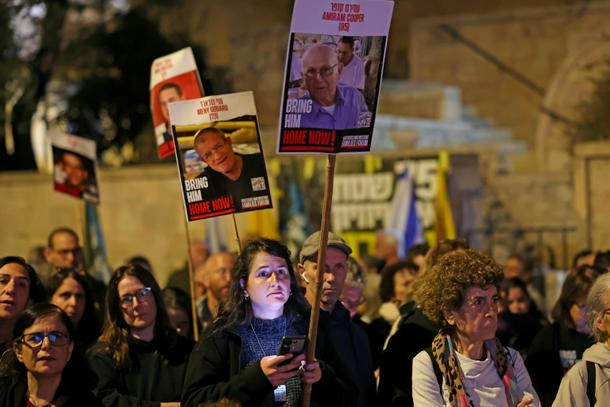
Israel launched multiple strikes in the Gaza Strip despite a nine-day-old ceasefire with Hamas
Gaza City (Palestinian Territories) (AFP) - Israel said it had resumed enforcing a Gaza ceasefire after carrying out dozens of deadly strikes on Hamas positions Sunday, having accused the group of targeting its troops in the most serious violence since the nine-day-old truce began.
Gaza’s civil defence agency, which operates under Hamas authority, said at least 45 people had been killed across the territory in Israeli strikes.
Four hospitals in Gaza confirmed the death toll of 45 to AFP, saying they had received the dead and wounded.
Israel’s military said it was looking into the reports of casualties.
Later Sunday, the military said it had “renewed enforcement of the ceasefire” but vowed to “respond firmly to any violation of it”.
The strikes began Sunday in response to what the Israeli military said in a statement had been a “blatant violation” of the ceasefire.
The military had “begun a series of strikes against Hamas terror targets in the southern Gaza Strip”, the statement added.
The Islamist group denied the accusations, one official accusing Israel of fabricating “pretexts” to resume the war.
In a separate statement, the Israeli military said two of its soldiers “fell during combat in the southern Gaza Strip”. The prime minister’s office later said they were killed in the city of Rafah.
A security official also told AFP that Israel was suspending the entry of aid into Gaza due to ceasefire violations.
Israel repeatedly cut off aid to the territory during the war, exacerbating dire humanitarian conditions, with the United Nations saying it caused a famine in northern Gaza.
- ‘Blood has returned’ -
The truce in the Palestinian territory, brokered by US President Donald Trump and taking effect on 10 October, halted more than two years of devastating war between Israel and Hamas.
The deal established the outline for hostage and prisoner exchanges, and was proposed alongside an ambitious roadmap for Gaza’s future. But it has quickly faced challenges to its implementation.
“Earlier today, terrorists fired anti-tank missiles and opened fire on IDF (army) forces,” in Rafah, the military said in a statement.
“The IDF responded with air strikes by fighter jets and artillery fire, targeting the Rafah area,” the statement said.

The truce in Gaza brought a halt to two years of fighting that left the Palestinian territory devastated
Palestinian witnesses told AFP clashes erupted in the southern city in an area still held by Israel.
One witness, a 38-year-old man who asked not to be named, said that Hamas had been fighting a local Palestinian gang known as Abu Shabab but the militants were “surprised by the presence of army tanks”.
“The air force conducted two strikes from the air,” he added.
Abdullah Abu Hasanin, 29, from Al‑Bureij camp in central Gaza where Israel launched strikes, said: “The situation is as if the war has returned anew.
“We had hoped the agreement would hold, but the occupation respects nothing – not an agreement, not anything.”
He said he had rushed to the site of the bombing to help, adding: “The scene is indescribable. Blood has returned again.”
AFP images from Bureij showed Palestinians running for cover from the strikes, as well as the dead and wounded arriving at Deir al-Balah hospital, accompanied by grieving relatives.
- ‘Security illusion’ -
Defence Minister Israel Katz warned Hamas would “pay a heavy price for every shot and every breach of the ceasefire”, adding Israel’s response would “become increasingly severe”.
A statement from Izzat Al-Rishq, a member of Hamas’s political bureau, reaffirmed the group’s commitment to the ceasefire.
Israel, it said, “continues to breach the agreement and fabricate flimsy pretexts to justify its crimes”.
Hamas’s armed wing insisted on Sunday that the group was adhering to the ceasefire agreement with Israel and had “no knowledge” of any clashes in Rafah.

Aid is now crossing into Gaza, but humanitarian agencies have called for the Rafah crossing to reopen to increase deliveries
Under Trump’s 20-point plan, Israeli forces have withdrawn beyond the so-called Yellow Line. That leaves them in control of around half of Gaza, including the territory’s borders but not its main cities.
Hamas in turn has released 20 surviving hostages and is in the process of returning the remaining bodies of those who have died.
The war, triggered by Hamas’s October 7, 2023 attack on Israel, has killed at least 68,159 people in Gaza, according to the health ministry in the Hamas-run territory, figures the United Nations considers credible.
The data does not distinguish between civilians and combatants but indicates that more than half of the dead are women and children.
Hamas’s 2023 attack on Israel resulted in the deaths of 1,221 people, mostly civilians, according to an AFP tally based on official Israeli figures.
- Bodies returned -
On Sunday, Israel identified the latest two bodies returned overnight as Ronen Engel, a photojournalist and volunteer ambulance driver, and Thai farm worker Sonthaya Oakkharasri.
Israel returned the bodies of 15 Palestinians to Gaza on Sunday, bringing the total number handed over to 150, the health ministry in the Hamas-run territory said.

There is pressure in Israel to ensure that Hamas returns the bodies of every dead hostage in Gaza
The issue of hostage bodies still in Gaza has become a sticking point in the ceasefire implementation.
On Saturday, Israel had linked the reopening of the main gateway into the territory, the Rafah crossing, to the recovery of all of the deceased.
The group has said it needs time and technical assistance to recover the remaining bodies from under Gaza’s rubble.
burs-jj/rlp